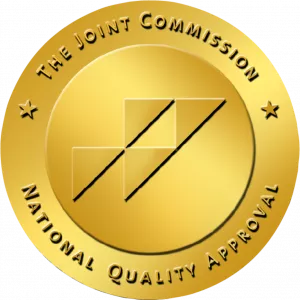In the ever-changing landscape of substance abuse, new and dangerous drugs continue to emerge—some flying under the radar until their effects become impossible to ignore. Clonazolam, a highly potent designer benzodiazepine, is one such substance that is becoming popular among recreational users and those struggling with anxiety or insomnia. While it promises extreme sedation and relaxation, its potency and unpredictable effects make it a serious public health concern. With a high risk of blackouts, overdose, and dependence, Clonazolam is proving to be more than just another street drug—it’s a ticking time bomb in the world of substance abuse. Understanding its dangers, effects, and treatment options is critical as more people fall into its grip.
Clonazolam Uses and Abuse

Clonazolam is a designer benzodiazepine known for its extreme potency. Originally created for research purposes, it was never approved for medical use but has surfaced in online markets and underground drug circles. As a member of the benzodiazepine class, it shares similarities with prescription medications like Xanax and Klonopin but is significantly more powerful - making its effects highly unpredictable and dangerous.
Unlike prescription benzos, Clonazolam has no recognized medical application. However, it is often sought out by individuals looking for its intense sedative, anti-anxiety, and muscle-relaxing effects. Some use it as a self-prescribed sleep aid or to manage anxiety, unaware of its extreme potency. Others take it recreationally, often combining it with other substances like alcohol or opioids, which significantly increases the risk of overdose and dangerous side effects.
Clonazolam’s potency makes it particularly risky when misused. It can cause deep sedation, memory blackouts, and impaired motor function even at low doses. Because it is often sold in unregulated tablet or liquid forms, users may not know how much they are consuming—leading to accidental overdoses. Regular use can quickly lead to tolerance, dependence, and withdrawal symptoms that can be severe or even life-threatening.
Clonazolam vs Clonazepam
How does Clonazolam compare to its cousin Clonazepam? Below is a short summary comparing the two substances in key areas.
|
|
Medical Uses |
Potency & Effects |
Addiction & Abuse Potential |
Clonazepam (Klonopin) |
A prescription benzodiazepine used to treat anxiety disorders, panic attacks, and seizures. It is FDA-approved and prescribed by doctors under strict guidelines.
|
Moderately potent, producing sedative, anti-anxiety, and muscle-relaxing effects. It has a longer half-life, making it useful for managing chronic conditions.
|
While it carries a risk of dependence and abuse, its regulated dosing helps manage addiction risks when taken as prescribed.
|
|
Clonazolam |
A designer benzodiazepine with no recognized medical use. It was synthesized for research but has never been approved for clinical treatment.
|
Extremely potent, with effects much stronger than Clonazepam. Users report deep sedation, memory loss, and blackouts even at low doses, making it significantly more dangerous. |
High potential for abuse, rapid tolerance development, and extreme withdrawal symptoms. It is often sold illicitly in unregulated doses, increasing overdose risk.
|
Why Do People Abuse Clonazolam?

Here are the main reasons why people abuse Clonazolam:
- Intense Sedation and Relaxation
Clonazolam produces a deep, almost instant calming effect, similar to other benzodiazepines but much stronger. People struggling with anxiety, insomnia, or stress may misuse it to self-medicate, believing it to be a quick fix for their symptoms. - Recreational High and Blackouts
Some users take Clonazolam recreationally for its euphoric and sedative effects. At higher doses, it can cause memory blackouts and dissociation, which some find appealing as a form of escape. However, these effects can be dangerous, leading to risky behaviors and complete loss of control. - Accessibility on the Web and Street Markets
Unlike prescription benzos, which require a doctor’s approval, Clonazolam is often available online or through illicit drug markets. Because it comes in unregulated liquid or tablet forms, people may not realize how strong a dose they are taking—leading to unintended overdoses. - Combining with Other Substances
Clonazolam is sometimes used alongside alcohol, opioids, or other depressants
to intensify its effects. This combination significantly increases the risk of respiratory depression, overdose, and fatal consequences. - Rapid Tolerance and Dependence
Since Clonazolam is so potent, users can quickly develop a tolerance, meaning they need higher doses to achieve the same effects. This cycle can lead to dependence, where individuals continue taking the substance just to avoid severe withdrawal symptoms such as seizures, panic attacks, and hallucinations.
Is Clonazolam Legal?

Clonazolam exists in a legal gray area in many places, as it was never approved for medical use and is often classified as a designer benzodiazepine. Unlike prescription benzodiazepines like Clonazepam (Klonopin) or Alprazolam (Xanax), Clonazolam is not regulated by the FDA, making its legality dependent on specific national and state laws.
U.S. Laws
In the U.S., Clonazolam is not approved for medical use and is often sold illicitly. While it is not explicitly listed as a federally controlled substance, several states have individually classified it as a Schedule I substance, making its sale, possession, and distribution illegal. Even in states where it is not yet scheduled, possession of Clonazolam can lead to legal consequences under analog drug laws.
International Laws
- United Kingdom: Clonazolam is classified as a Class C drug, meaning it is illegal to possess, supply, or manufacture.
- Canada: Clonazolam is a controlled substance under the Benzodiazepines and Other Targeted Substances Regulations, making unauthorized possession or sale illegal.
- Australia: Clonazolam is classified as a Schedule 9 substance, meaning it is prohibited except for research purposes.
- European Union: Some EU countries, like Sweden and Switzerland, have specifically banned Clonazolam, while others regulate it under analog laws.
Effects of Clonazolam
Regardless of how it is taken, Clonazolam produces effects similar to other benzodiazepines but at a much stronger level. These include:
- Deep sedation – Extreme drowsiness, often to the point of losing consciousness.
- Muscle relaxation – Heavy body sensation and lack of coordination.
- Memory blackouts – Loss of any memory of what happened while under the influence.
- Euphoria and calmness – A pleasurable, calm. anxiety-free state before sedation kicks in (for some users)
- Slurred speech and impaired motor function – Walking, talking, and even basic coordination become difficult.
- Respiratory depression – Slowed or shallow breathing, which can be life-threatening in high doses or when mixed with other depressants.
Pill vs. Liquid Clonazolam
Clonazolam comes in a pill as well as a liquid form. Below is a brief comparison of the two forms.
Clonazolam Pills:
Often pressed into tablets that resemble prescription benzodiazepines.
- Unregulated, meaning doses can vary widely from pill to pill.
- Takes longer to kick in compared to liquid, but effects last longer.
- Higher risk of overdose if multiple pills are taken, especially due to delayed onset.
Clonazolam Liquid:
- Typically sold in dropper bottles or blotter paper.
- Absorbs quickly, leading to faster onset of effects—often within 15-30 minutes.
- Difficult to dose properly, increasing the risk of accidental blackouts or overdose.
- Often mixed with alcohol or other substances, heightening its dangerous effects.

Both pill and liquid Clonazolam are highly risky, but the liquid form may be even more dangerous due to its rapid onset and unpredictable dosing. Many users accidentally take too much because it kicks in quickly, leading to blackouts, respiratory depression, and overdose.
Clonazolam Addiction Treatment
Clonazolam addiction is dangerous, and quitting without medical help can lead to severe withdrawal symptoms, including seizures and panic attacks. The safest way to recover is through medical detox, followed by inpatient or outpatient rehab to address the root causes of addiction.

At Avenues Recovery Centers, we provide professional detox, therapy, and long-term support to help you regain control of your life. If you or a loved one is struggling with Clonazolam addiction, don’t wait—reach out today to start your path to recovery.
You can find your way home.



